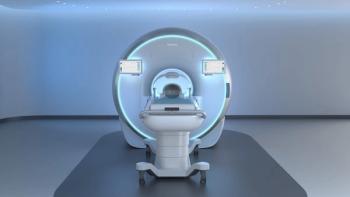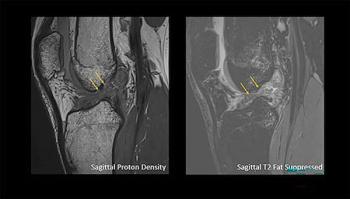
Siemens prepares release of MRI arterial spin labeling
A non-contrast-based MR imaging technique for visualizing brain vasculature is due to appear soon as part of an integrated package from Siemens Medical Solutions for the assessment of ischemic stroke. The new product will correlate structural and functional data with diffusion and perfusion data.
A non-contrast-based MR imaging technique for visualizing brain vasculature is due to appear soon as part of an integrated package from Siemens Medical Solutions for the assessment of ischemic stroke. The new product will correlate structural and functional data with diffusion and perfusion data.
Newly added arterial spin labeling will visualize vasculature without the injection of contrast media. These data will be combined with those from established methods, such as blood oxygen level-dependent contrast, to provide a comprehensive evaluation of ischemic disease, according to Jeffrey M. Bundy, Ph.D., senior director of MR R&D for Siemens.
Siemens will acquire these data using 3T, improved radiofrequency, and a 12-channel head coil. A 32-channel coil is in development. The company will also offer a 1.5T version of the package that will use similar technologies, including a 12-channel head coil. Underlying both configurations are the parallel imaging capabilities inherent in Siemens' Total imaging matrix, commonly called Tim, and algorithms for 3D prospective motion correction.
"To do this, you need all the pieces," Bundy said.
The first step in arterial spin labeling is to magnetically label water molecules in the arterial blood passing into the cerebrum. The labeled water flows into a slice of interest, altering total tissue magnetization. This reduces the MR signal and image intensity, which is documented in the so-called tag image. The process is then repeated, but this time without magnetically labeling the arterial blood, producing a reference image. One is then subtracted from the other to produce a perfusion image without the use of contrast media.
The idea behind ASL has been a theoretical possibility for years. MR scanners, however, have not delivered enough signal to distinguish differences in tissue magnetization. The increased signal-to-noise ratio possible with Siemens' newly developed package allows this differentiation, according to Ionnis Panagiotelis, Ph.D., market manager for the ultrahigh-field segment at Siemens.
Siemens released the work-in-progress package, complete with ASL, initially to luminaries in academia and clinical practice who have served previously as research collaborators. The goal is to gain experience with the technology and validate its clinical utility. A broader commercial release is expected by the end of the calendar year.
"Providing it within our standard neuro tools will allow customers to integrate arterial spin labeling very quickly and easily in their daily workflow," Bundy said.
Newsletter
Stay at the forefront of radiology with the Diagnostic Imaging newsletter, delivering the latest news, clinical insights, and imaging advancements for today’s radiologists.




























